Improvisation Sequences for Elementary Music
In the last few posts, we looked at some of the things to consider before jumping into improvisation activities. Now we’ll talk about some great ways to approach improvisation in elementary music.
Improvisation can be intimidating to teach. This might be because it’s different from other skills we work with as educators.
Skills like imitation, reading music, and writing music are concrete. Students will understand right away if they have achieved the purpose of the activity or not.
When we compare that to improvisation, we see the potential results are much more open-ended. This can make it challenging for the students to know if they have achieved the purpose of the activity, or if they have done it “right.”
It can also make it challenging for us to know if they have achieved the purpose.
What parameters could we put around the activity to guide student responses? Will we be satisfied with any musical output from our students? Getting clear on your structure will help not only with the flow of the activity, but also with classroom management.
So here are some of my favorite structures for improvisation. Each blueprint can be adapted to work with a different grade level, concept, or medium.
1. Here Comes a Bluebird:
The Song:
My 1st and 2nd graders are always thrilled when we pull this song out!
Game:
Students stand, with hands joined in a ring. One student walks in and under the arches. At “take a little partner,” this child takes a partner and with two hands joined they face each other. They gallop out through the opening where the child was taken from the ring and back again, or they dance the same around the ring. The first child joins the ring. The student who was chosen is the next bluebird and the game begins again.
The Purpose:
Grade: 1st or 2nd
Musical Focus: Improvising quarter and eighth notes, or improvising quarter notes, eighth notes, and half notes. The decision will depend on what rhythmic elements you focus on the most, and where you are in your personal curriculum.
Student Readiness: Before doing this activity, make sure your students have a thorough understanding of steady beat, rhythm, rhythm vs beat, and quarter notes / eighth notes. If you choose to use this activity to practice half notes, it would be ideal for students to be in the half notes practice phase.
You can read more about writing your music curriculum here, here, or here. You can also find an editable curriculum outline in The Planning Binder.
The Process:
You could go through this whole process in one class, or break it up by doing steps 1 - 4 in one class and steps 1, 5, and 6 in another class.
Sing the song and play the game
Clap the rhythm of the words to phrases one and three. Sing phrases two and four in your head.
Extract the rhythm to phrases one and three.
Check your answer
Clap the rhythm to phrases 1 and 3. Improvise phrases 2 and 4 on body percussion.
Discuss the rhythm combinations you could include in the improvisation.
Google Slides
These slides walk through the process for this activity. Scroll through the images to view the sequence.
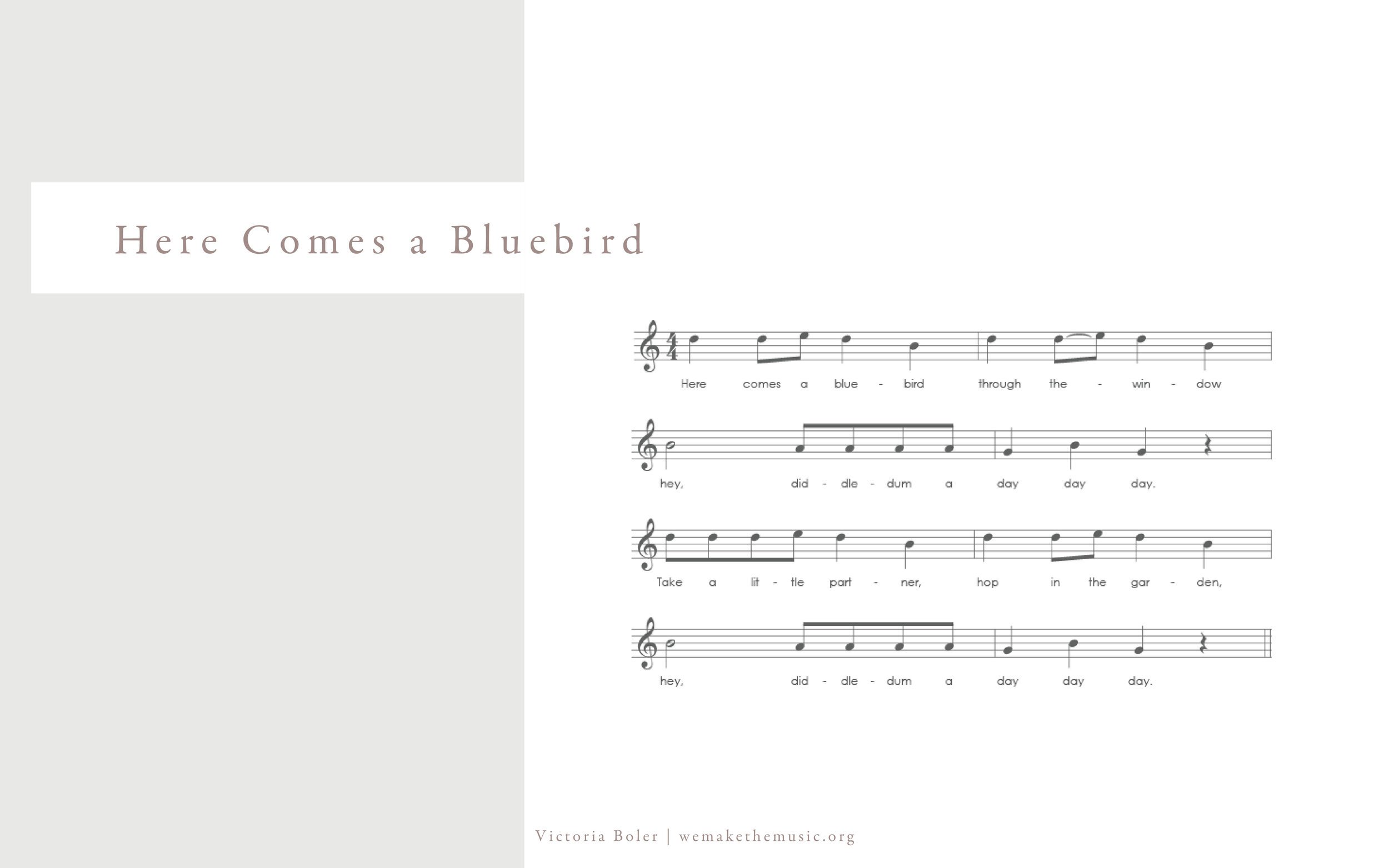
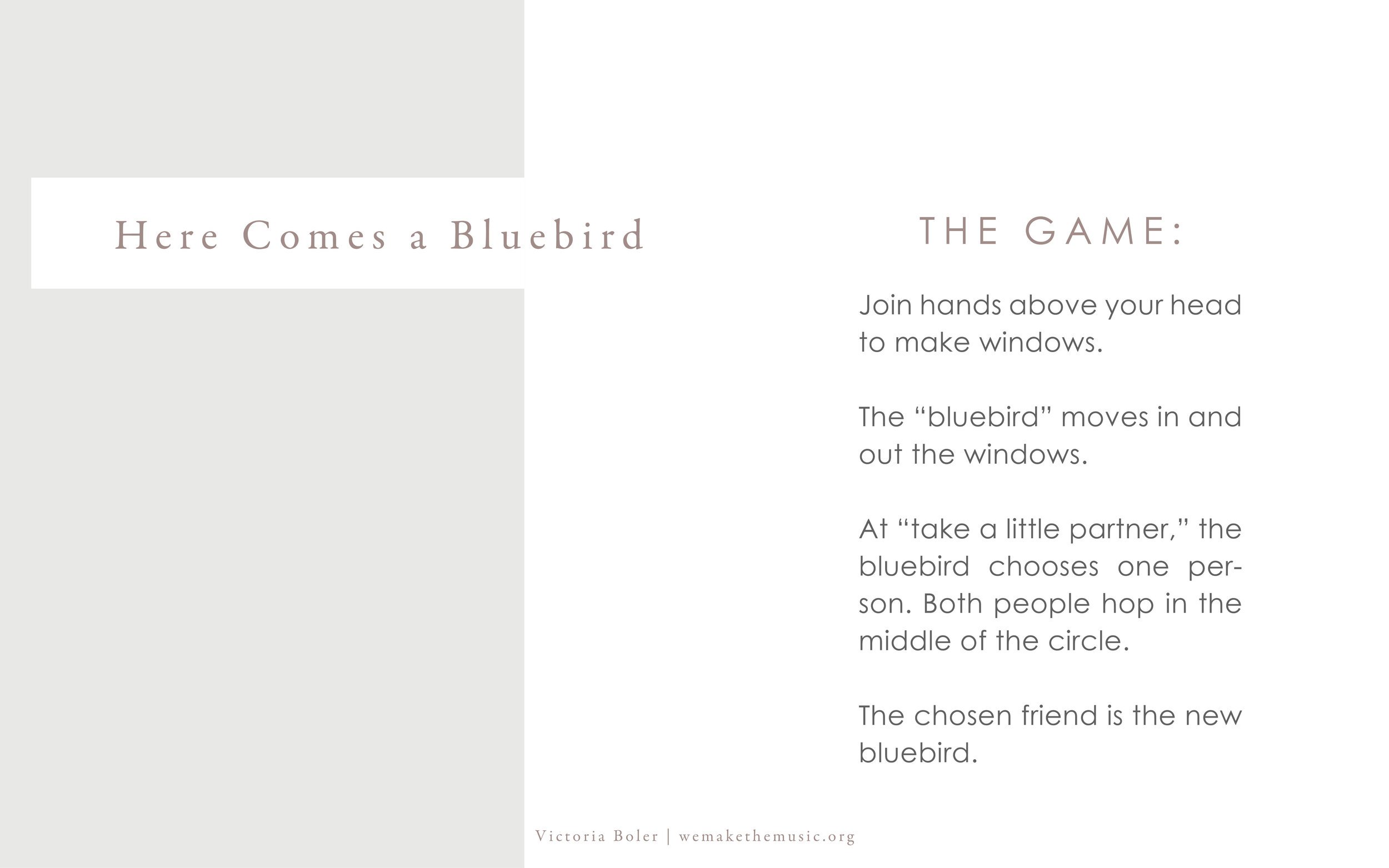
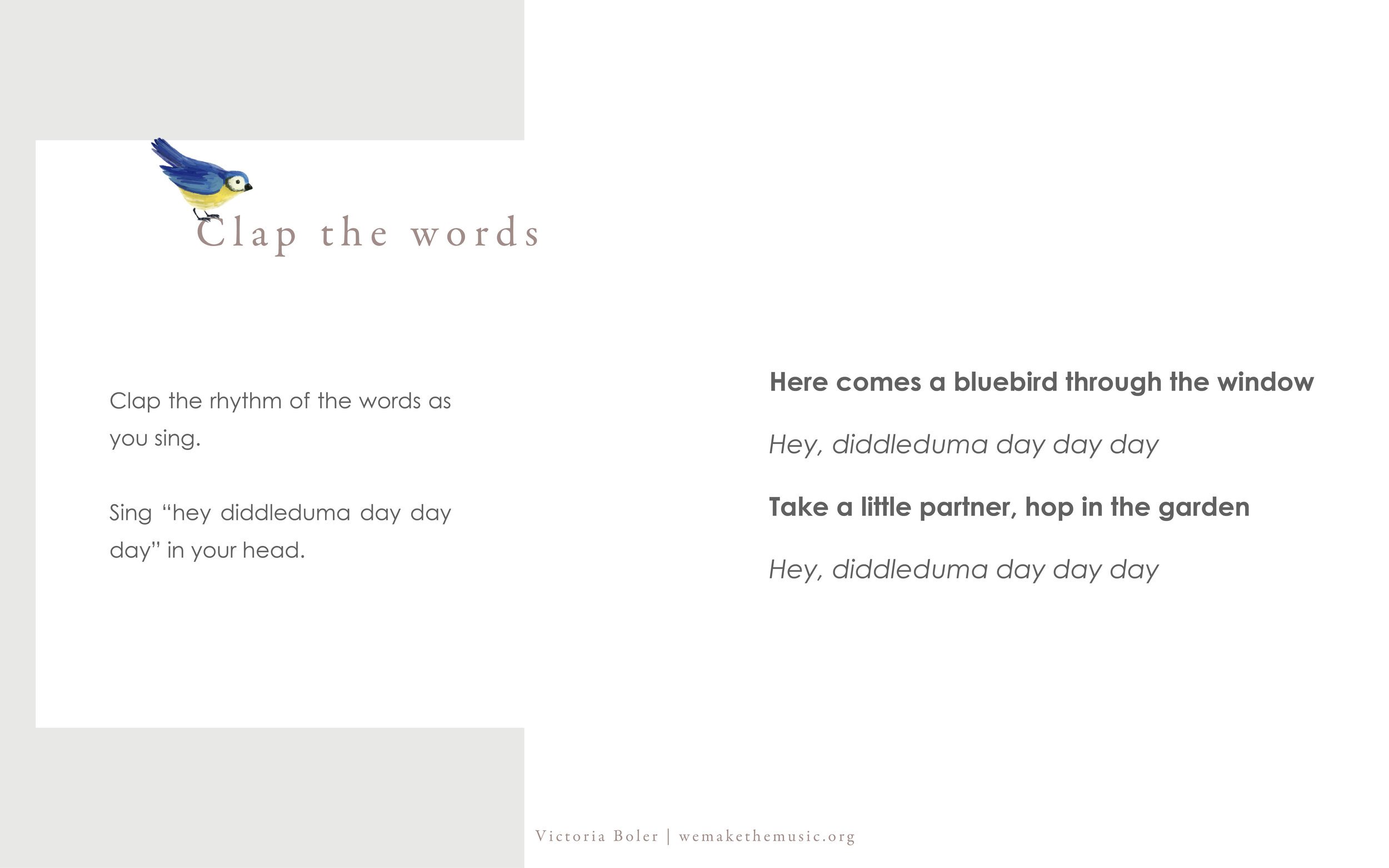
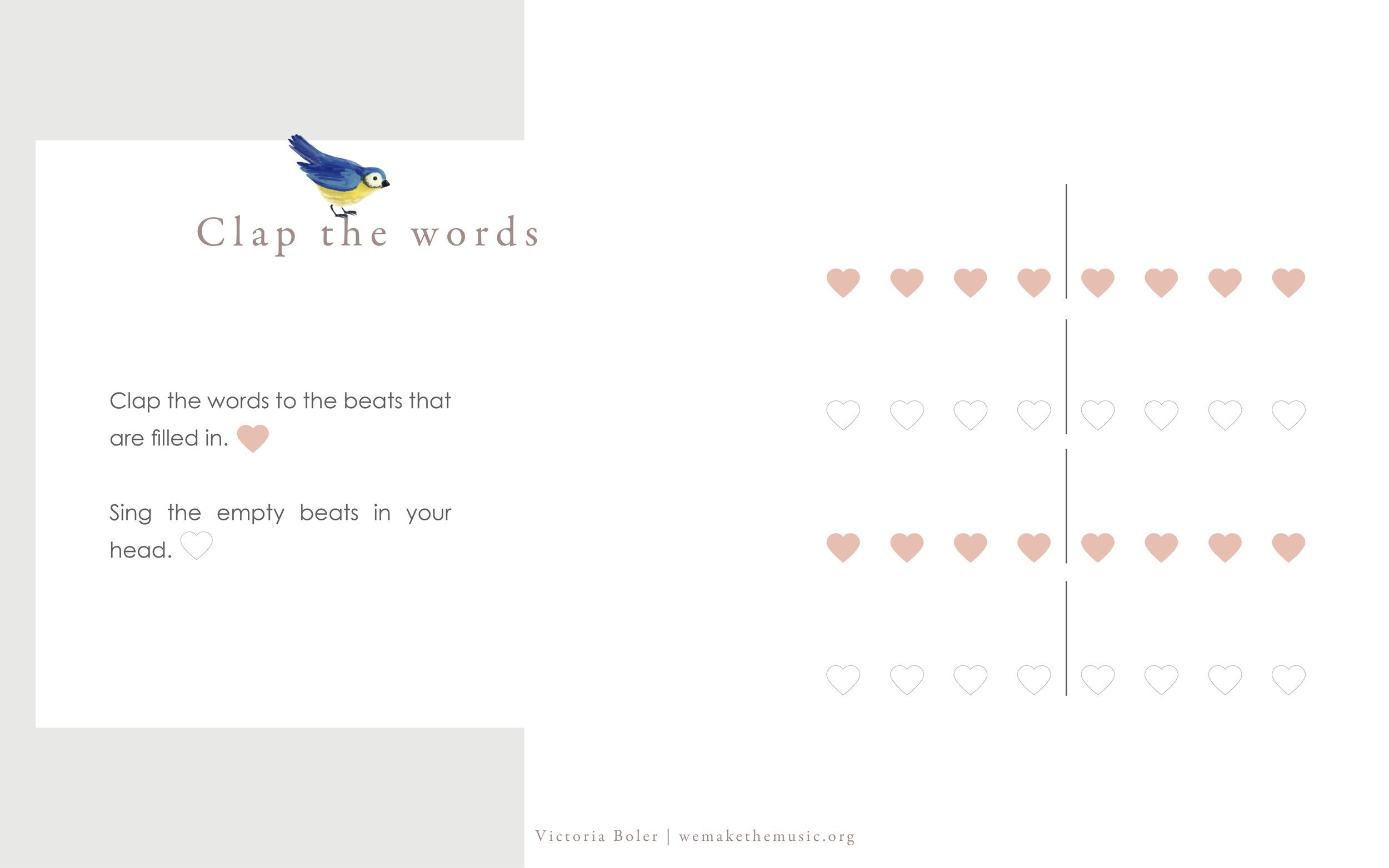
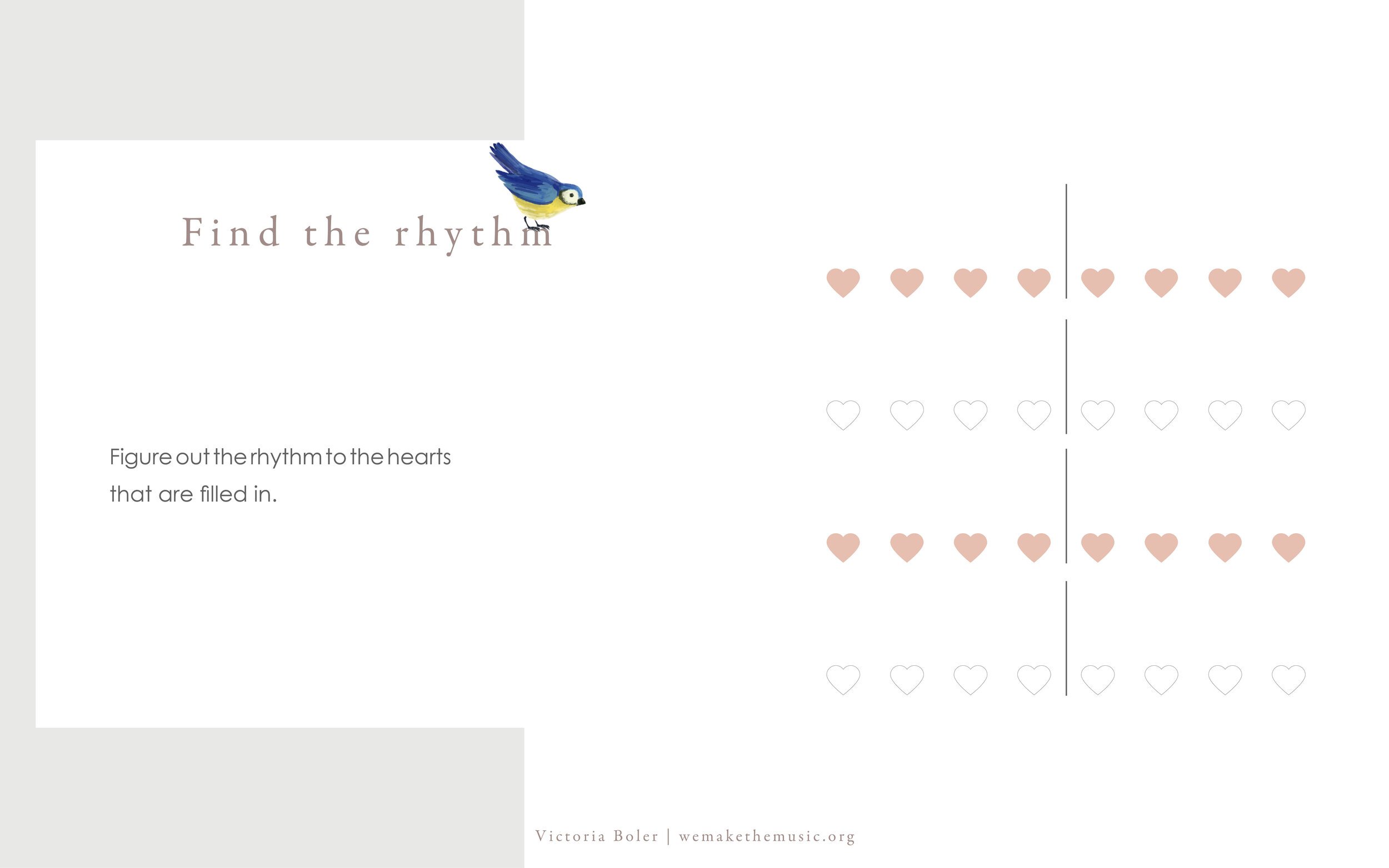
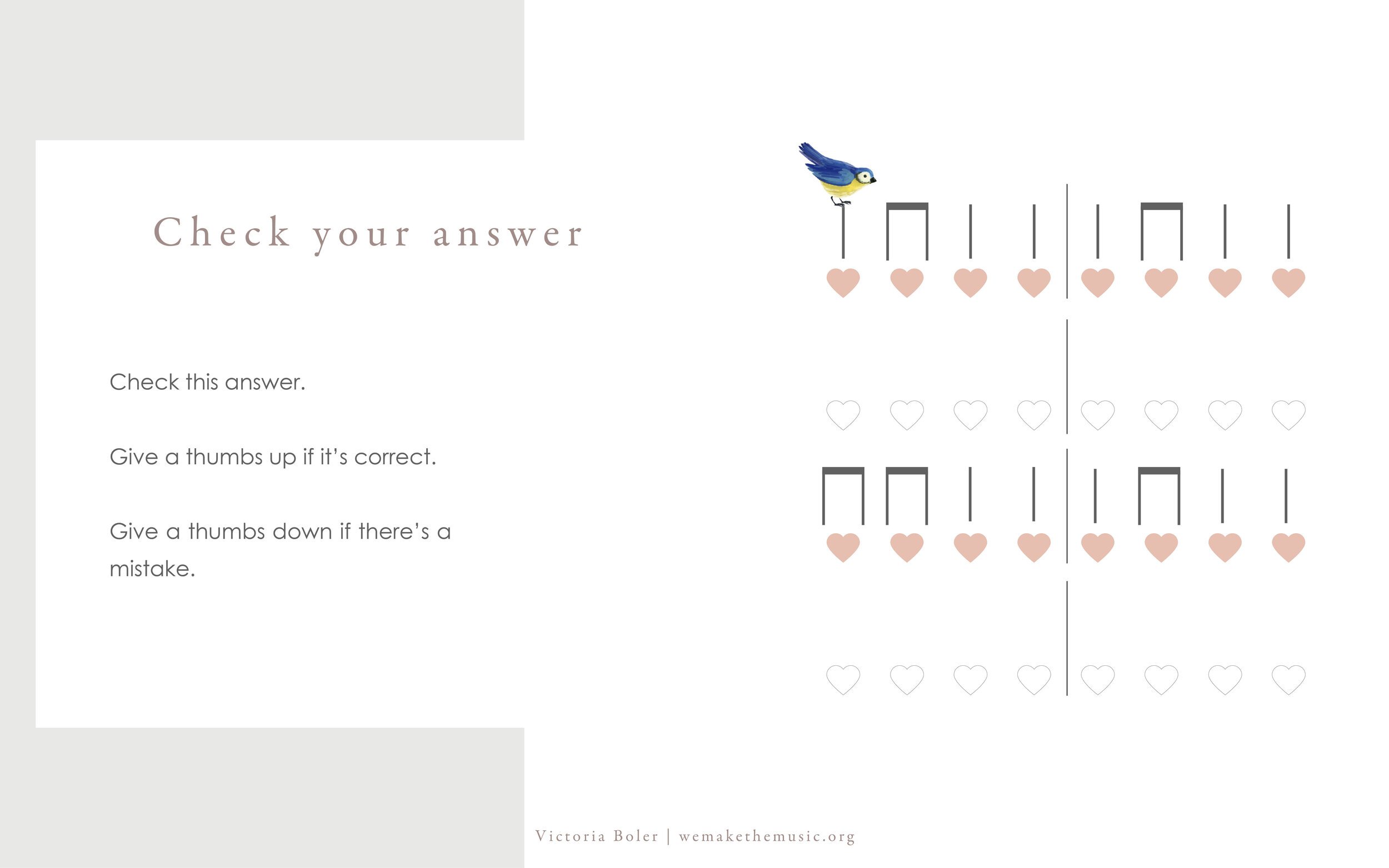
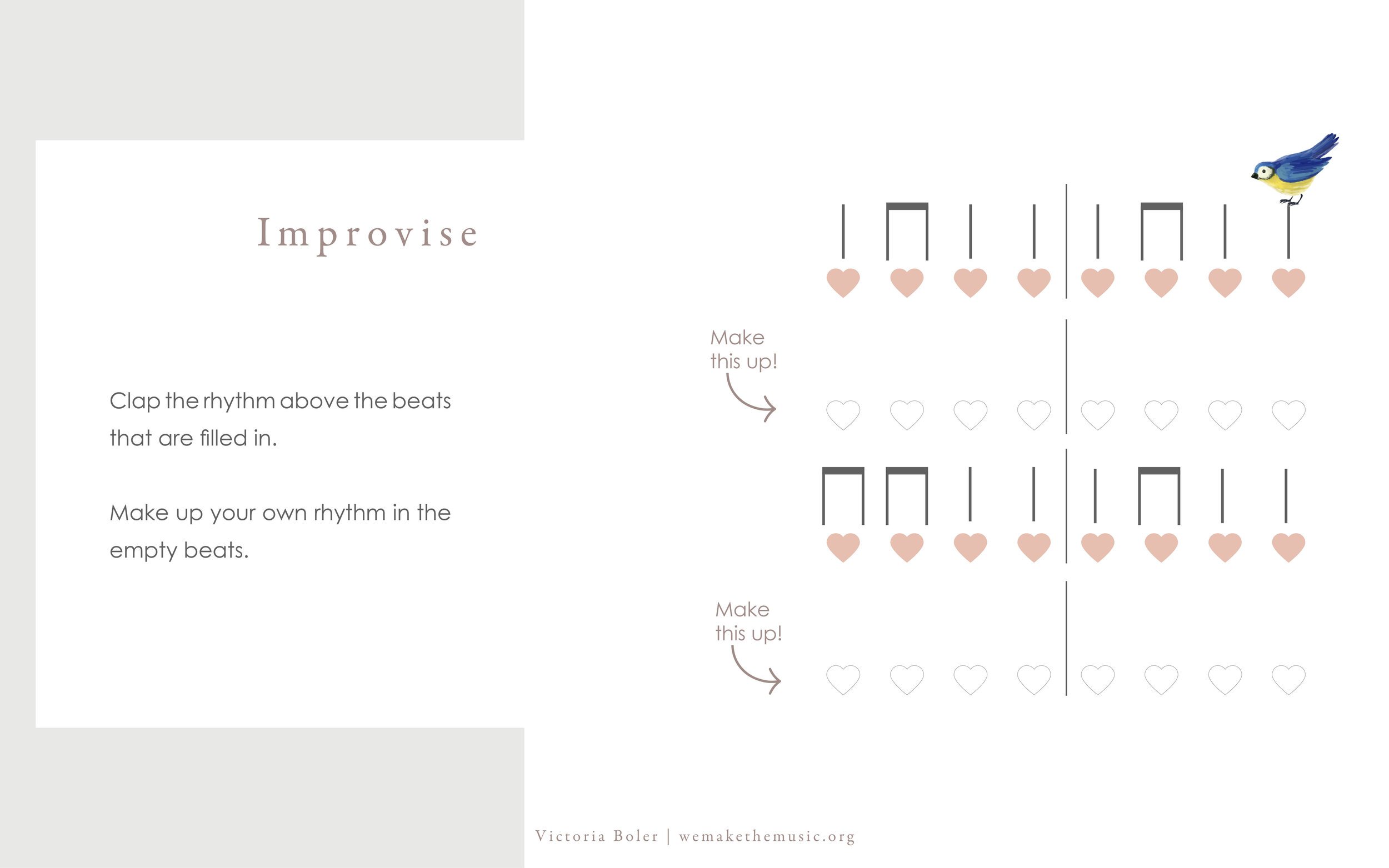

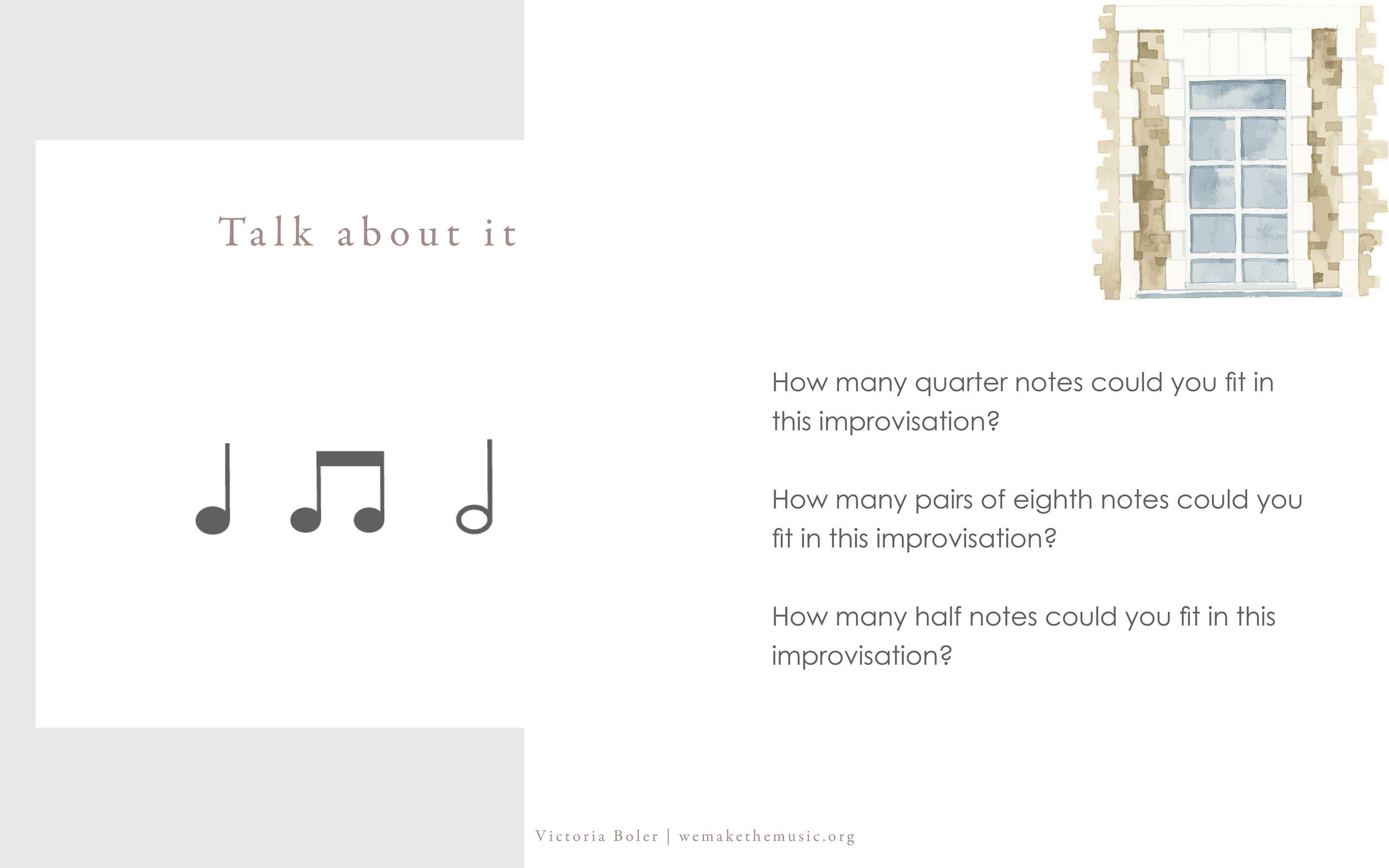
You can grab the Google Slides presentation below. I send resources like this to my email list once or twice a month.
Extension:
In Here Comes a Bluebird, students clap part of the song, and improvise the other part on body percussion. You could certainly leave it there! Body percussion is a musical destination in and of itself.
But you could also transfer the improvisations to pitched percussion (xylophones, metallophones, and glockenspiels) or unpitched percussion (especially certain kinds of hand drums, but also cabasa, triangle, or rhythm sticks).
Transferring to other song materials:
This is a “fill in the blank” improvisation activity that could be used virtually with any song.
A helpful element to look for if you choose to apply this to another piece of material is some sort of repeating structure in the songs (ABAC, ABAB, etc.). Students can make up the part that stays the same, or make up a new version of the part that’s different.
2. Rocky Mountain
This activity for Rocky Mountain has a melodic focus instead of a rhythmic focus.
I designed the activity to be used with barred instruments. However, you could also use with with another tonal instrument, such as the voice or recorder. If you choose to go the vocal route, add in some work with vocal patterns by isolating portions of the song (“Rocky mountain rocky mountain,” “Do remember me,” “Rocky Mountain High”). Vocal improvisation relies much more heavily on the ear, so students will find the most success by using tonal patterns in their improvisations.
The Purpose:
Grade: 3rd (depending on your curriculum!)
Musical Focus: Re practice, or full pentatone practice
Student Readiness: This activity is designed for use on barred instruments, so students will have the most success if they’re comfortable with using both hands as they play, playing in the center of the bar, and bouncing their mallets. In other words, if they have experience with how to best play the instrument, their focus won’t be divided between both the technical parts of sound production and improvising a melody. They should also be very secure with quarter notes, eighth notes, and quarter rests.
The Process:
As you click through the slides below, you’ll notice there’s an emphasis on the rhythm of the song before students improvise the melody. That’s intentional.
Even through the focus of the activity is melodic improvisation, students need to be grounded in the structural elements of the piece. Those structural elements come from the rhythm of the song. A foundation in the rhythmic structure keeps the students on track as they play - it tells them when to stop and start their improvisations, and when it’s time to pay special attention to specific pitches at the end of each phrase.
The slides below go through the process I recommend for sequencing this activity. I suggest breaking the activity up into more than one lesson.
Sing the song while keeping the rhythm or the beat
Figure out the rhythm of the song
Check your answer
Create movement to represent the contour of different mountain ranges
Sing the song while you trace the contour of the mountain ranges
Figure out the solfege
Check your answer
Create your own mountain range by placing the rhythm on the barred instruments. Once partner claps the rhythm while the other improvises a melody.
Discuss qualities that you enjoyed in your melody.
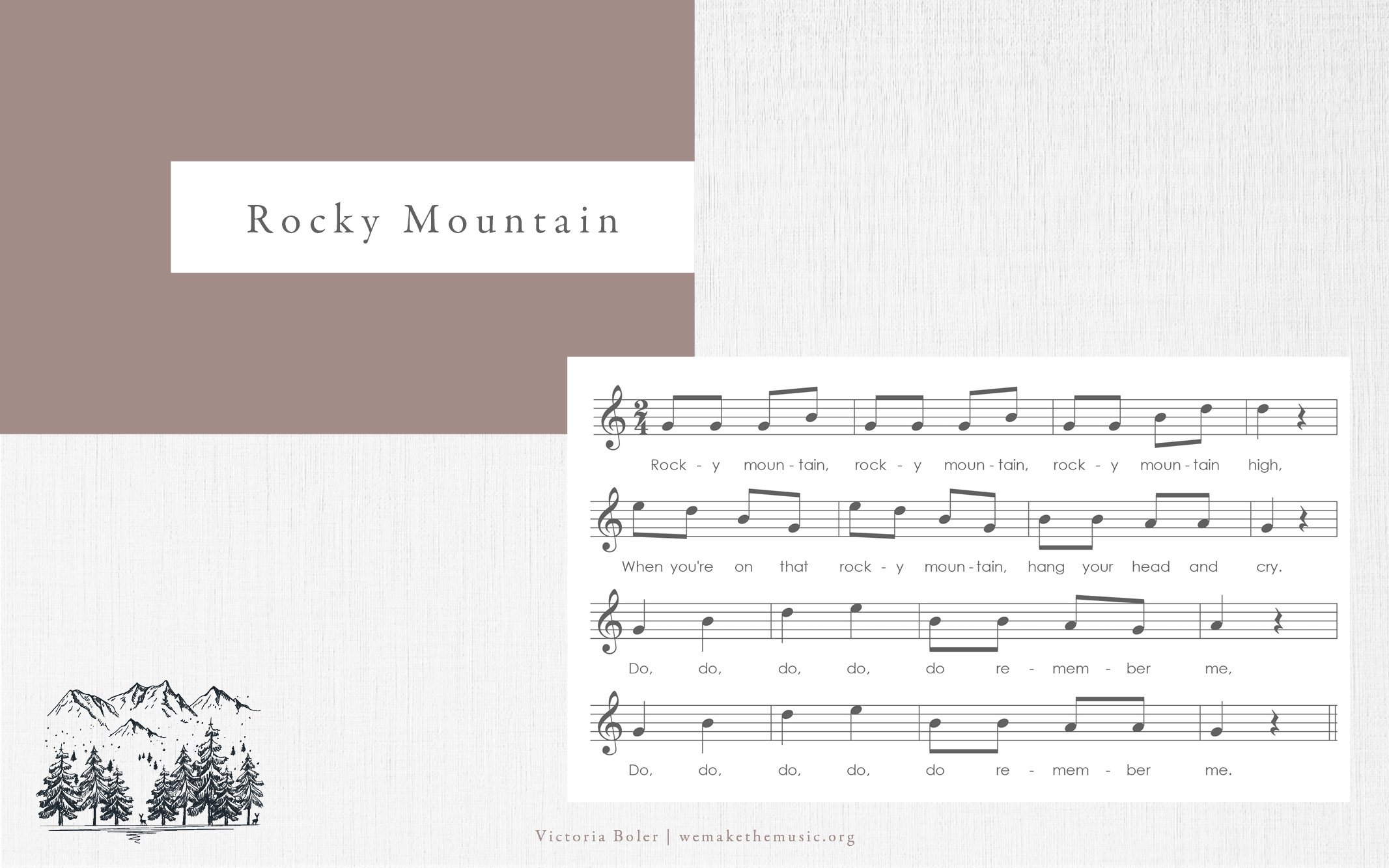
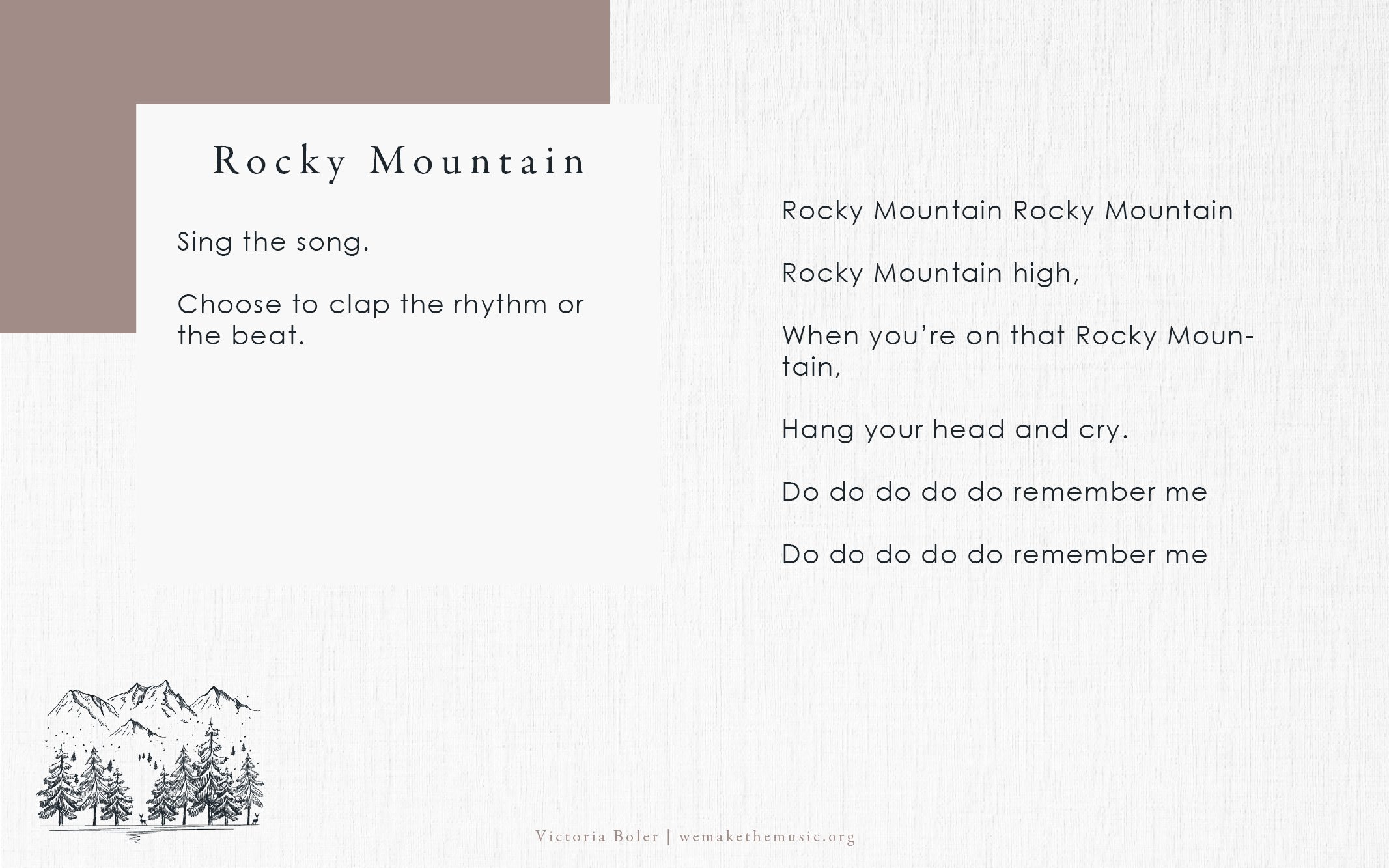
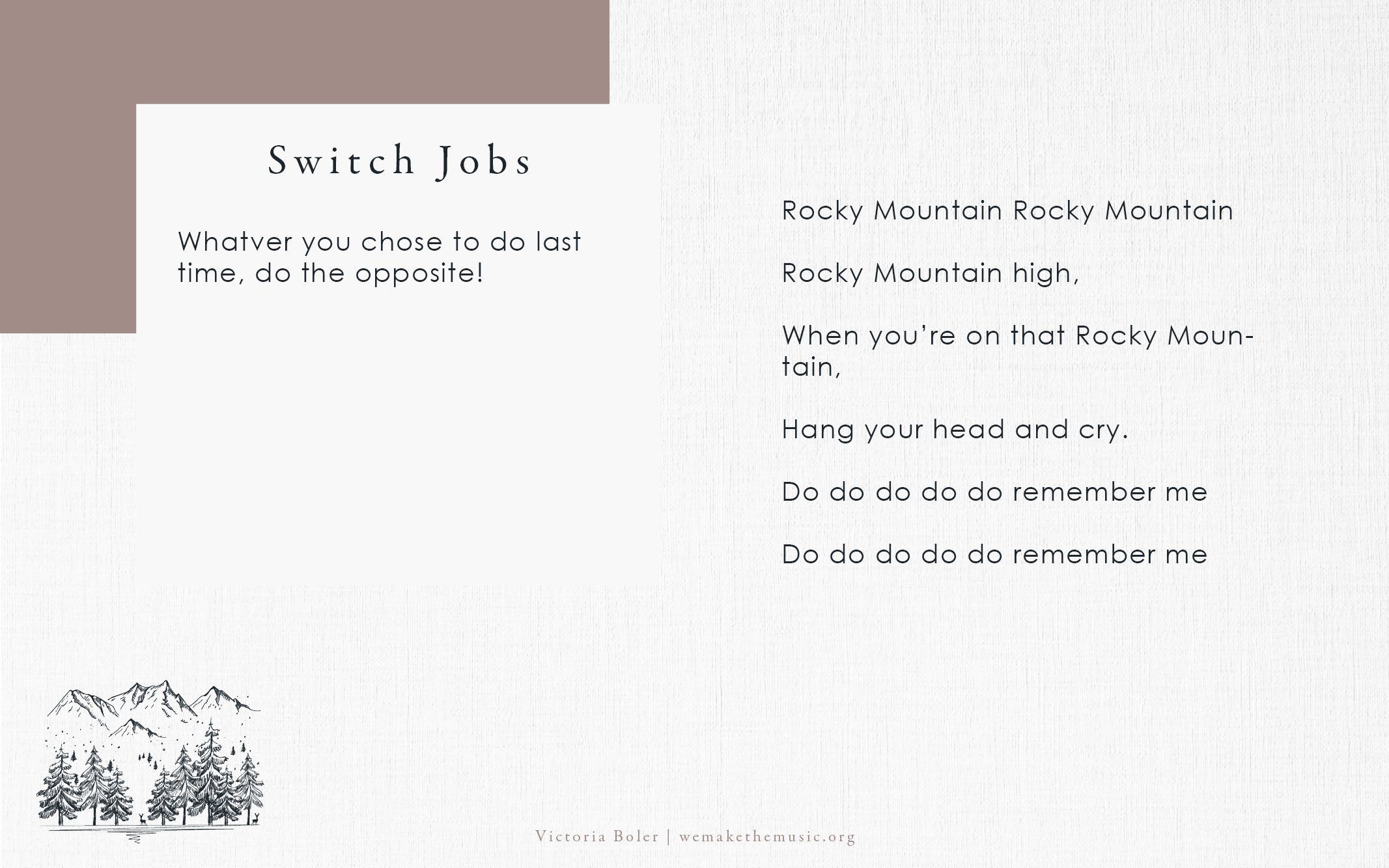
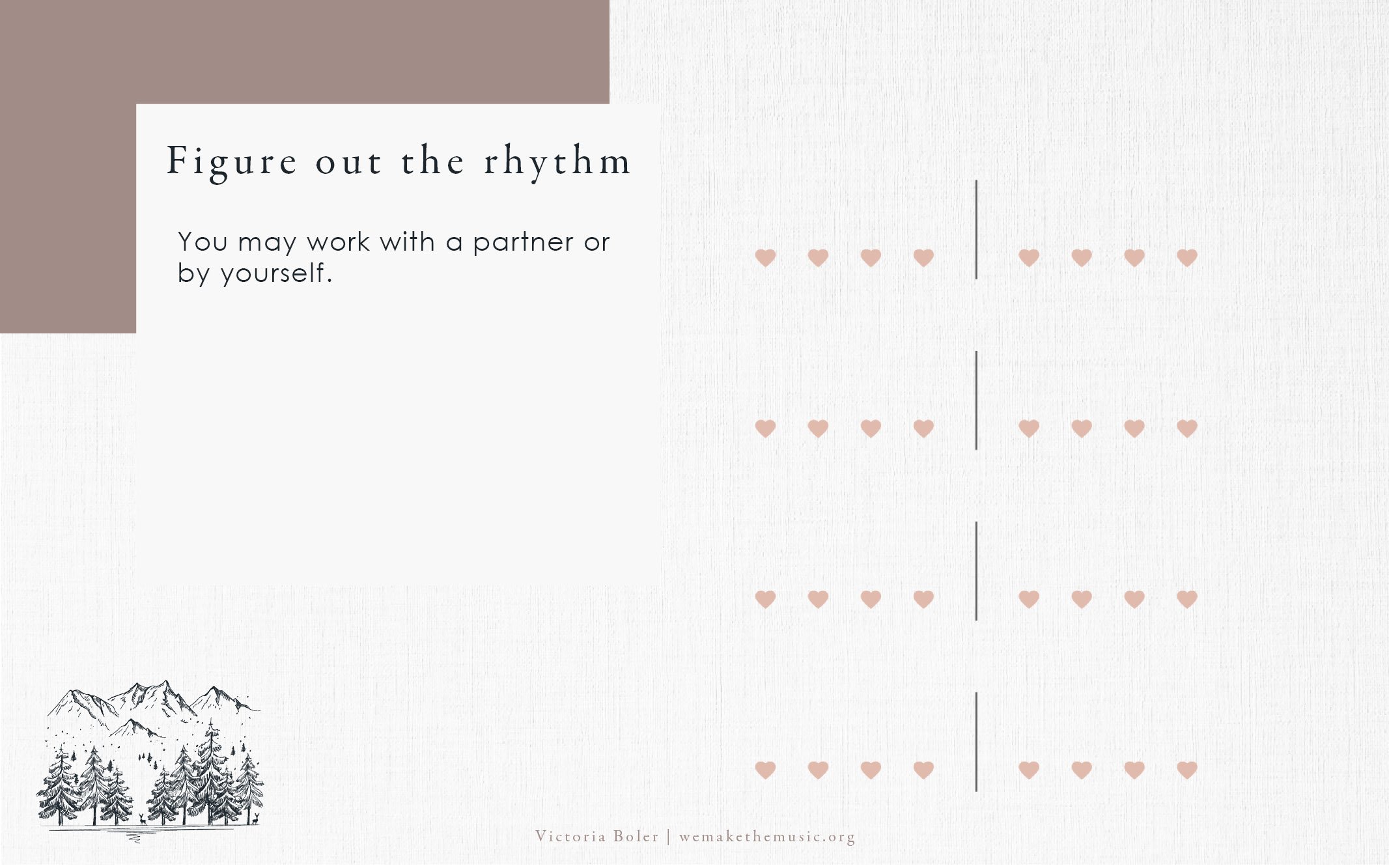
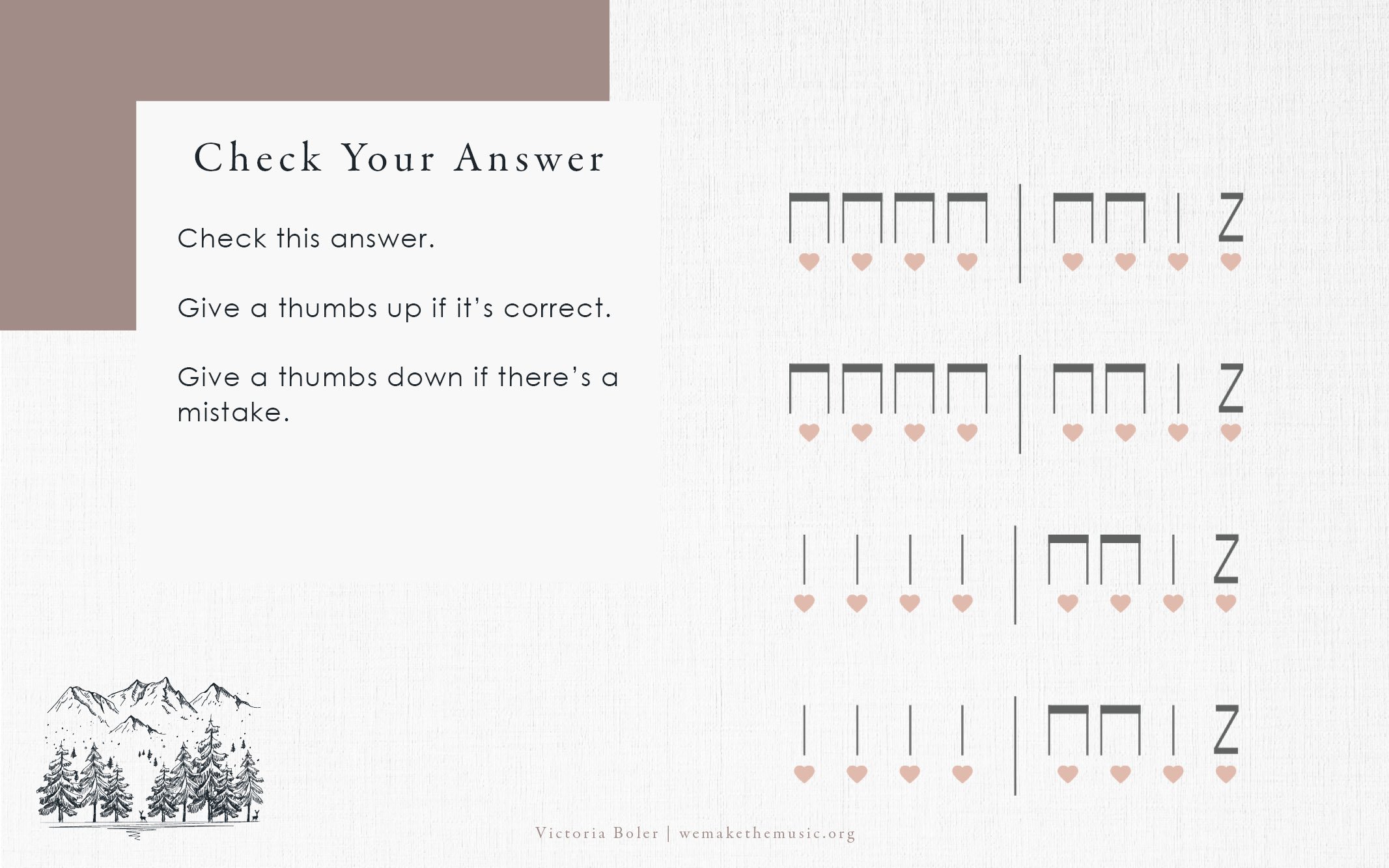
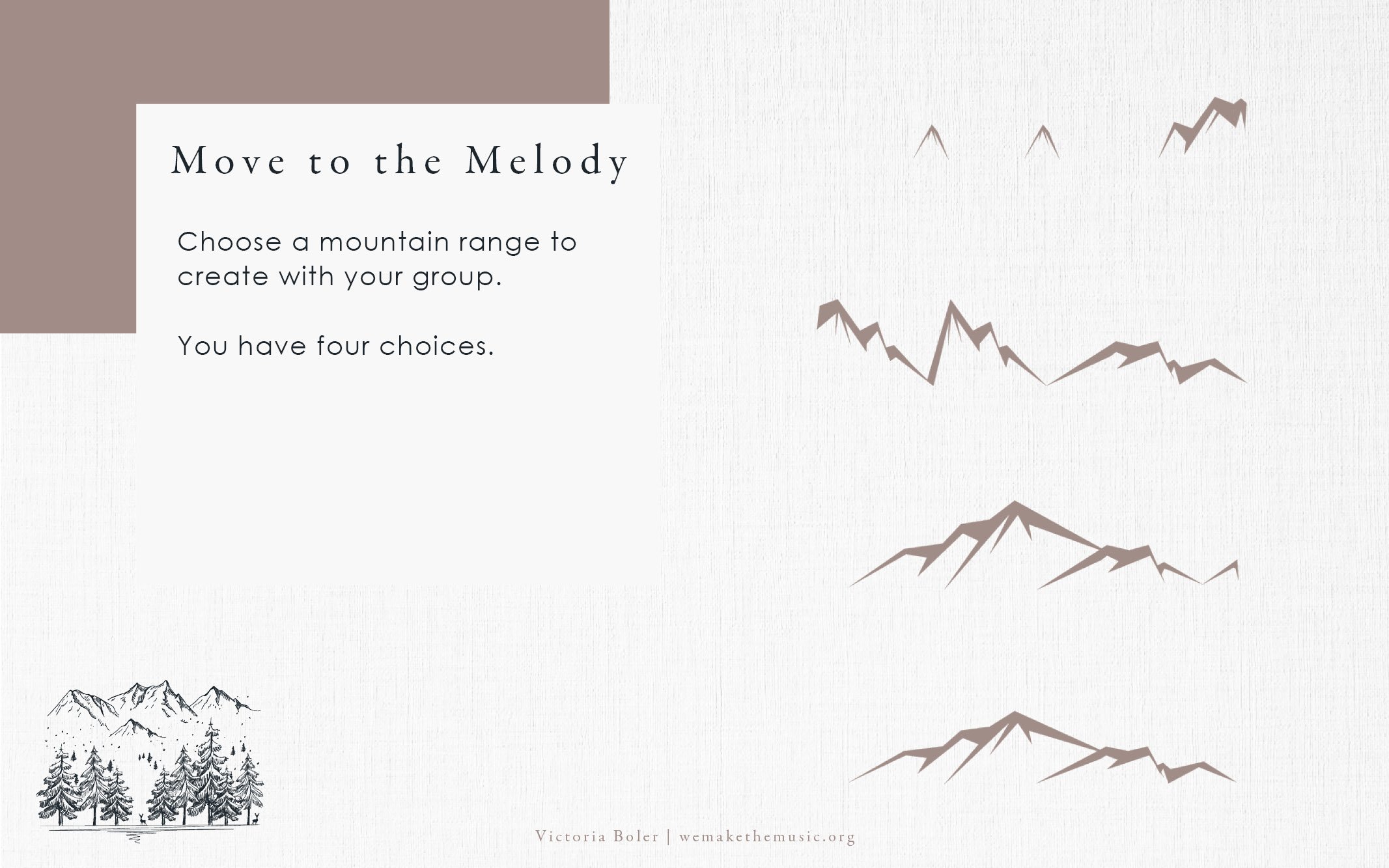
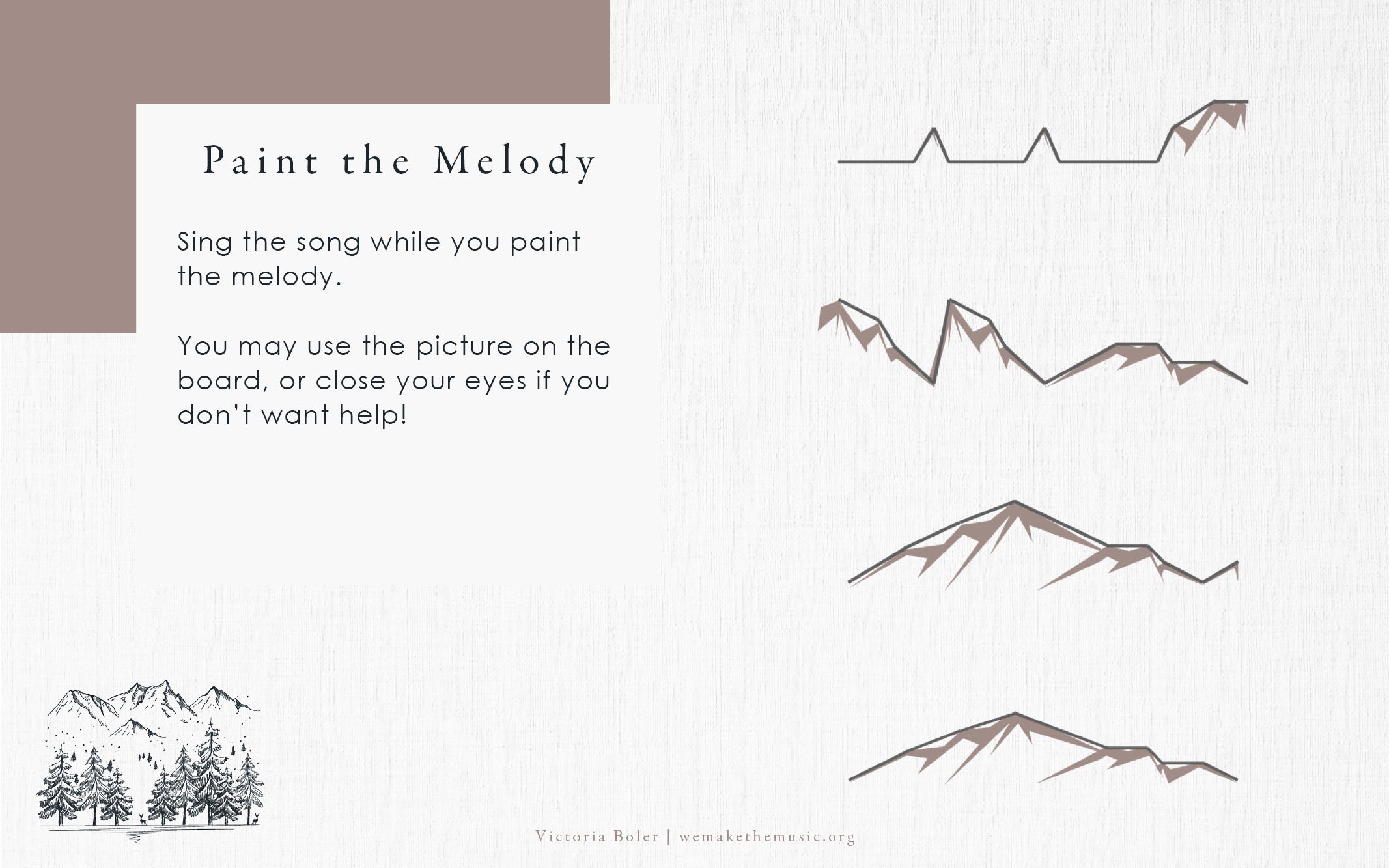
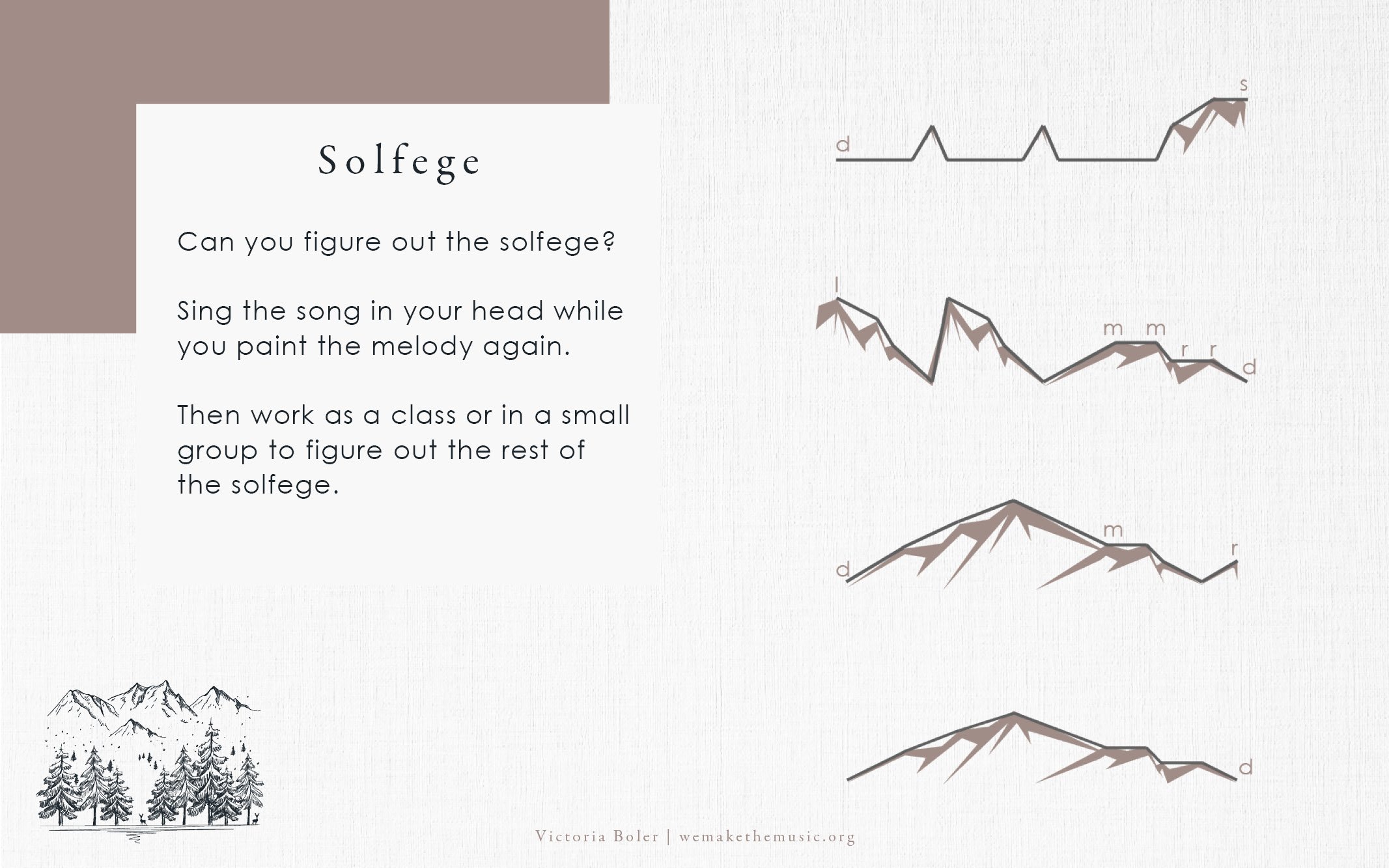
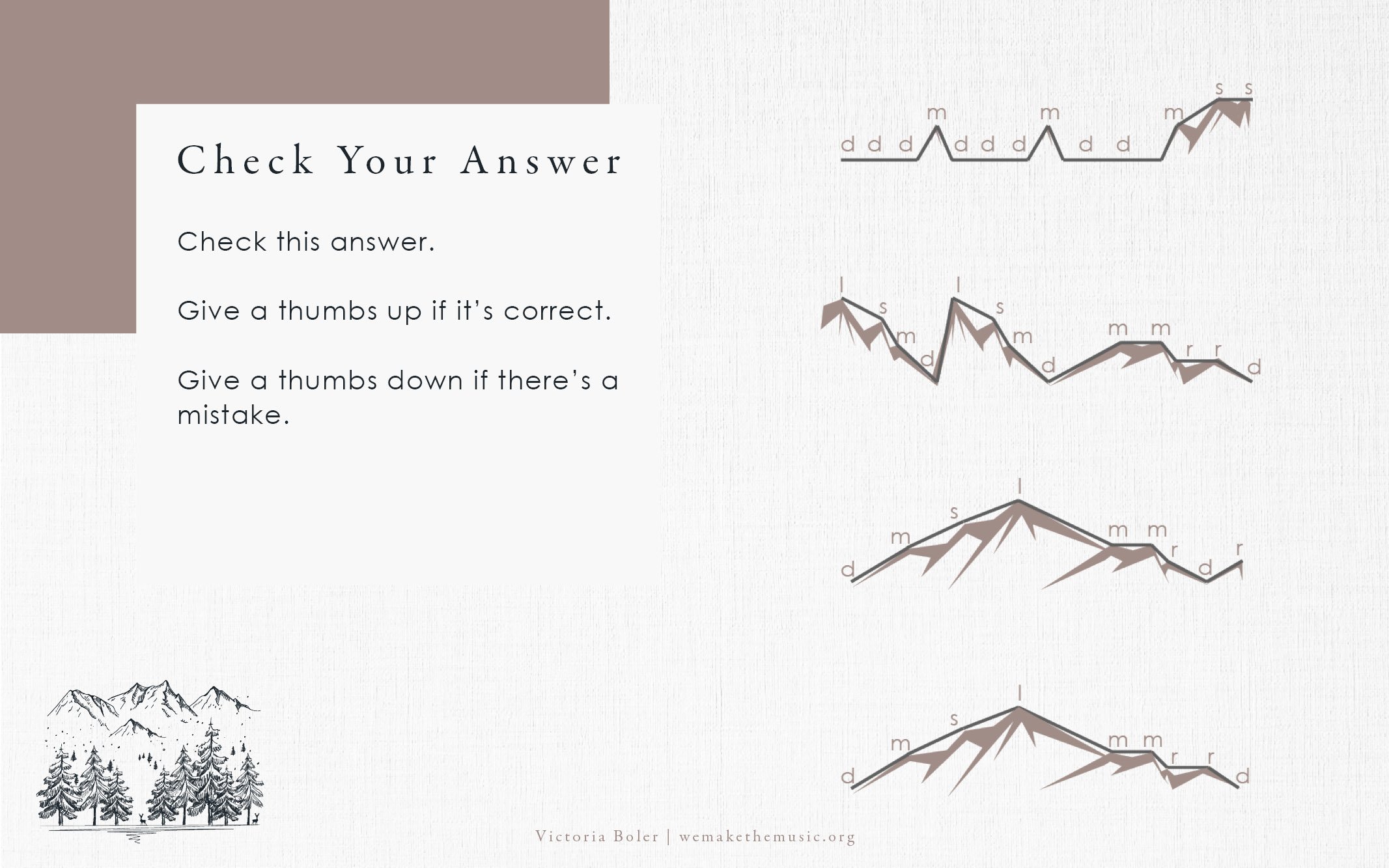
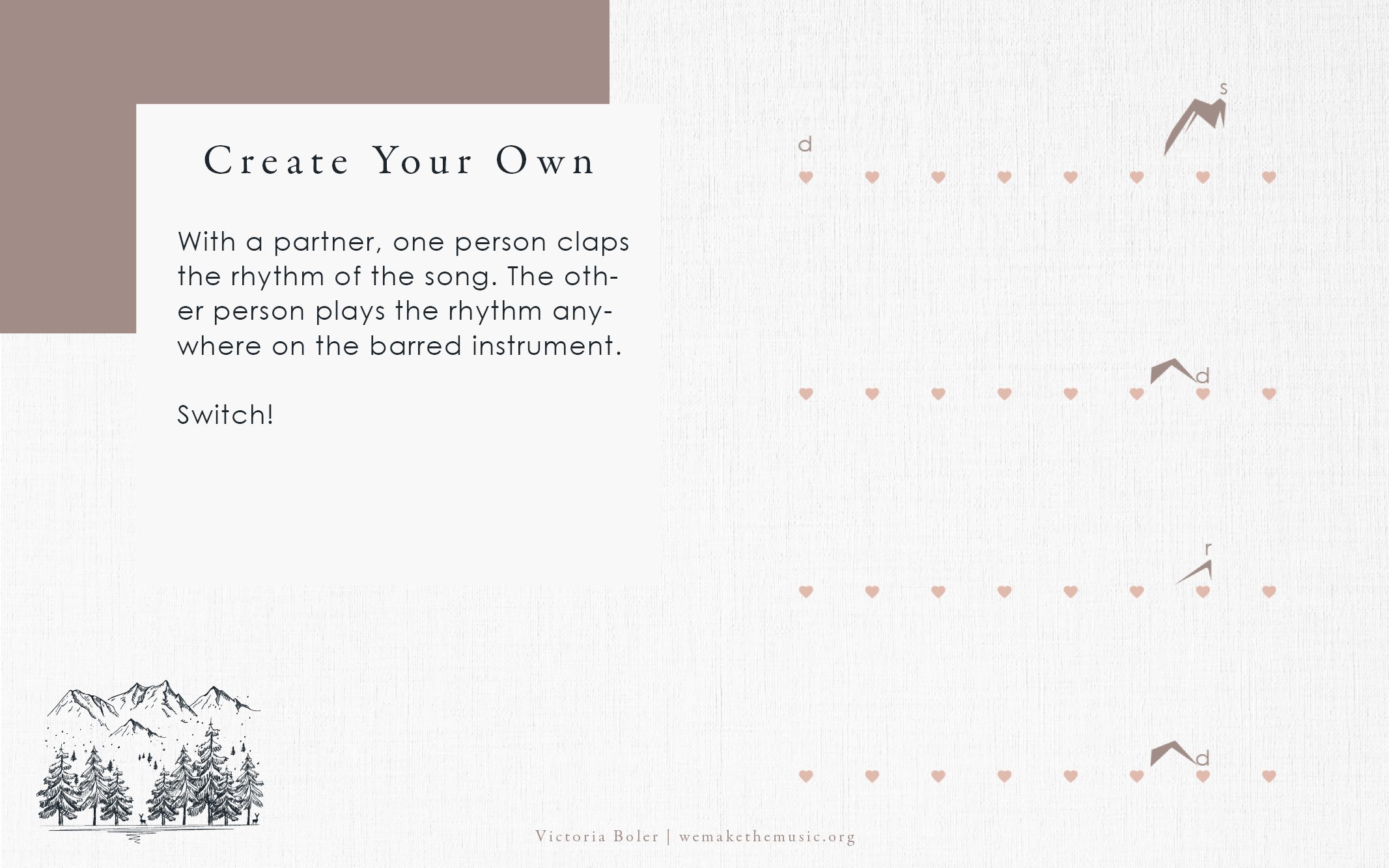
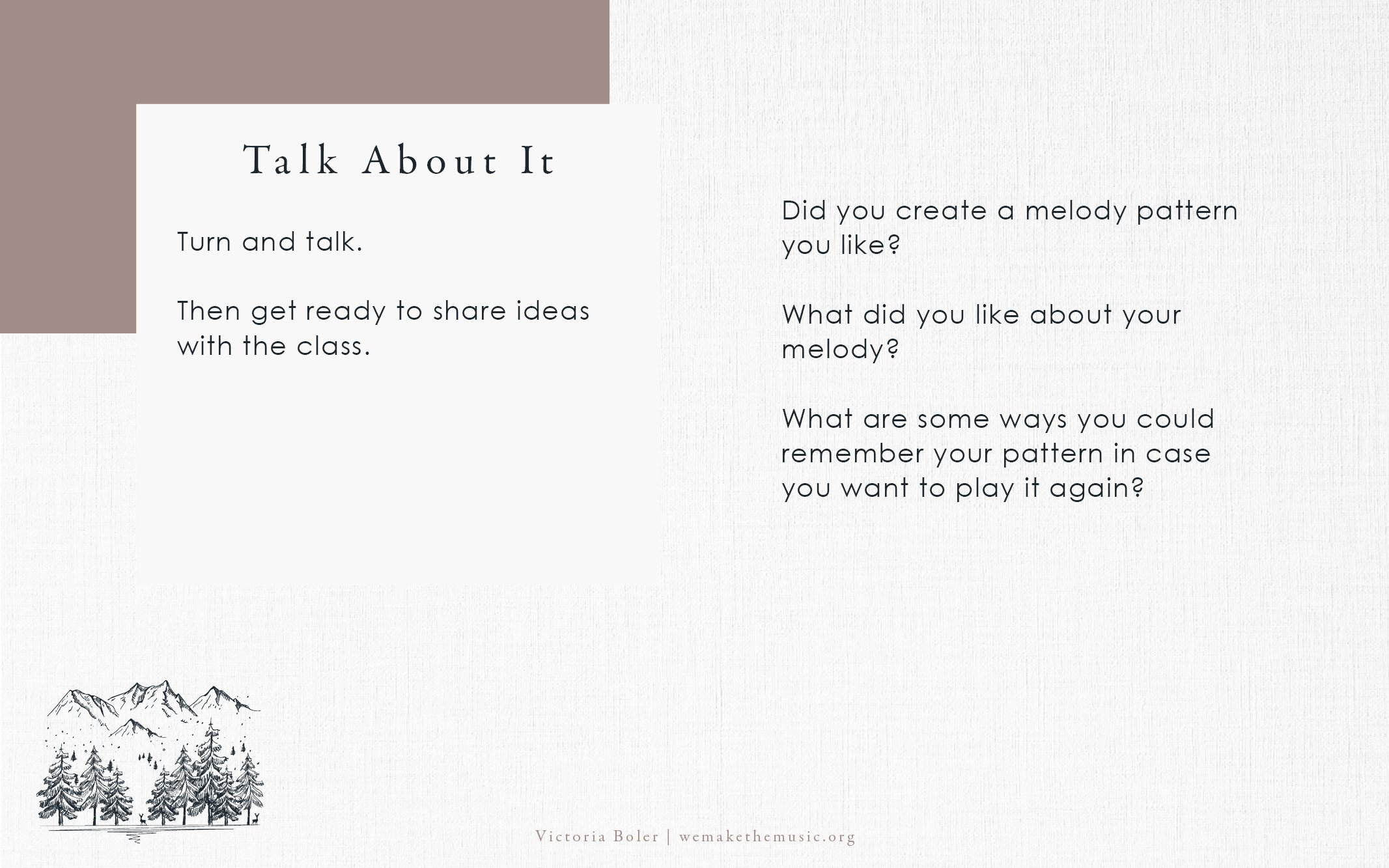


You can grab the Google Slides presentation below. I hate having a messy inbox, so I only send resources like this one that I would be thrilled to get as well!
Extension:
You’ll notice the ending to this improvisation lesson is open-ended. You could leave it as an improvisation (how the slides end). Or you could transition to a composition activity by inviting students to write down their improvisations in standard notation.
The choice is yours!
Transferring to Other Materials:
This activity for Rocky Mountain has rhythms on the simple side for students following my curriculum. That makes it easier to focus on the melodic structure in this improvisation activity. The rhythmic form of the song also includes repetition (AABB), which is another helpful component. If you’re looking to transfer this activity to another song, simple rhythms and repetition will be your friends!
3. I Got a Letter This Morning
The final improvisation in this activity happens in rondo form. Rondo form is ideal for many types of improvisation because it keeps everyone involved in the music. All students sing the main song. Then, two students at a time (one in each circle) improvise four beats.
The sequence also gradually moves the performance expectation from whole-group to individual. Students will have multiple chances to improvise as a whole group, in small groups, and with partners before improvising individually. This kind of gradual narrowing is crucial to establishing a culture of safety necessary for improvisation.
The last key component in this activity is that the teacher models improvisation for the students. Having the teacher model creative musicianship gives students examples of how simple their rhythms can be. Many students are intimidated that their improvisation won’t be impressive enough, and the teacher has the opportunity at the beginning of the process to show that simple improvisations can very well be the most musical.
The Purpose:
Grade: 4th or 5th
Musical Focus: taka-mi
Student Readiness: Before students use this activity, they should have a solid knowledge of 16th note rhythm combinations, including takadimi, taka-di, ta-dimi, and taka-mi.
The Process:
Sing the song call-and-response style.
Students clap the rhythm of the words
Add a B section: “Open the letter, tell me, what does it say?” Students may choose the body percussion for the rhythmic question.
Practice reading three different rhythm cards as a rhythmic answer to the question
The class asks the rhythm question and the teacher answers with one of the three rhythmic answers. Students hold up a number on their fingers to show which one they heard.
The last envelope is blank. The teacher improvises a response, and students identify it as the fourth envelope.
The teacher asks the rhythmic question, and the students choose the response. They may choose a rhythm that is already notated, or they may improvise.
Divide the class in half - half perform the question, half perform the answer. Switch.
Divide the class by groups of four - each group of four does either the question or the answer. Switch.
Students find a partner and an unpitched percussion instrument. One person asks the rhythmic question on body percussion. The other performs an improvisation (not a written response) on the unpitched percussion instrument.
Divide the class into two groups. In rondo form, students sing the song, then improvise individually on unpitched percussion. Two musicians will improvise at the same time, but they will be in different groups.
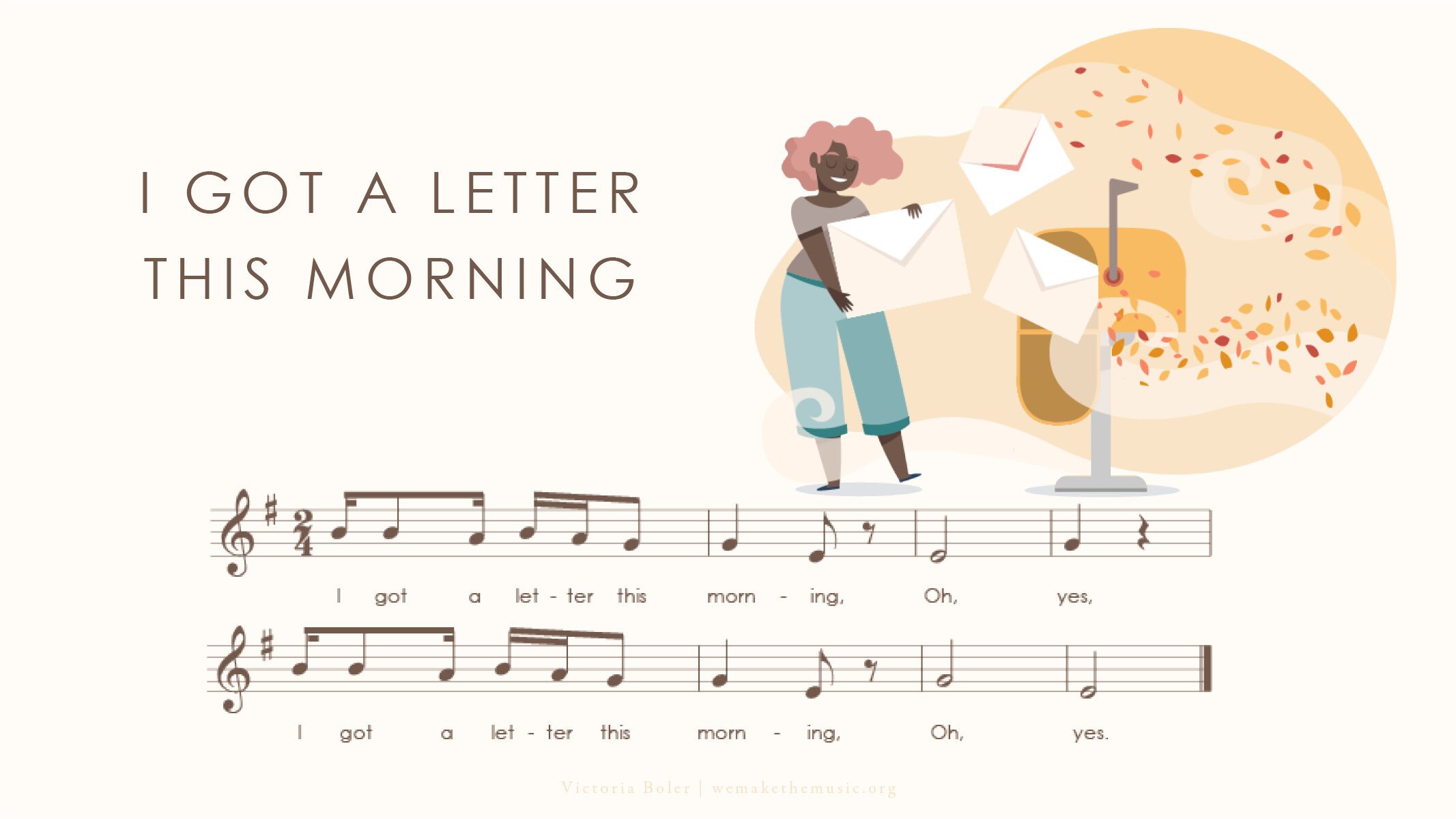
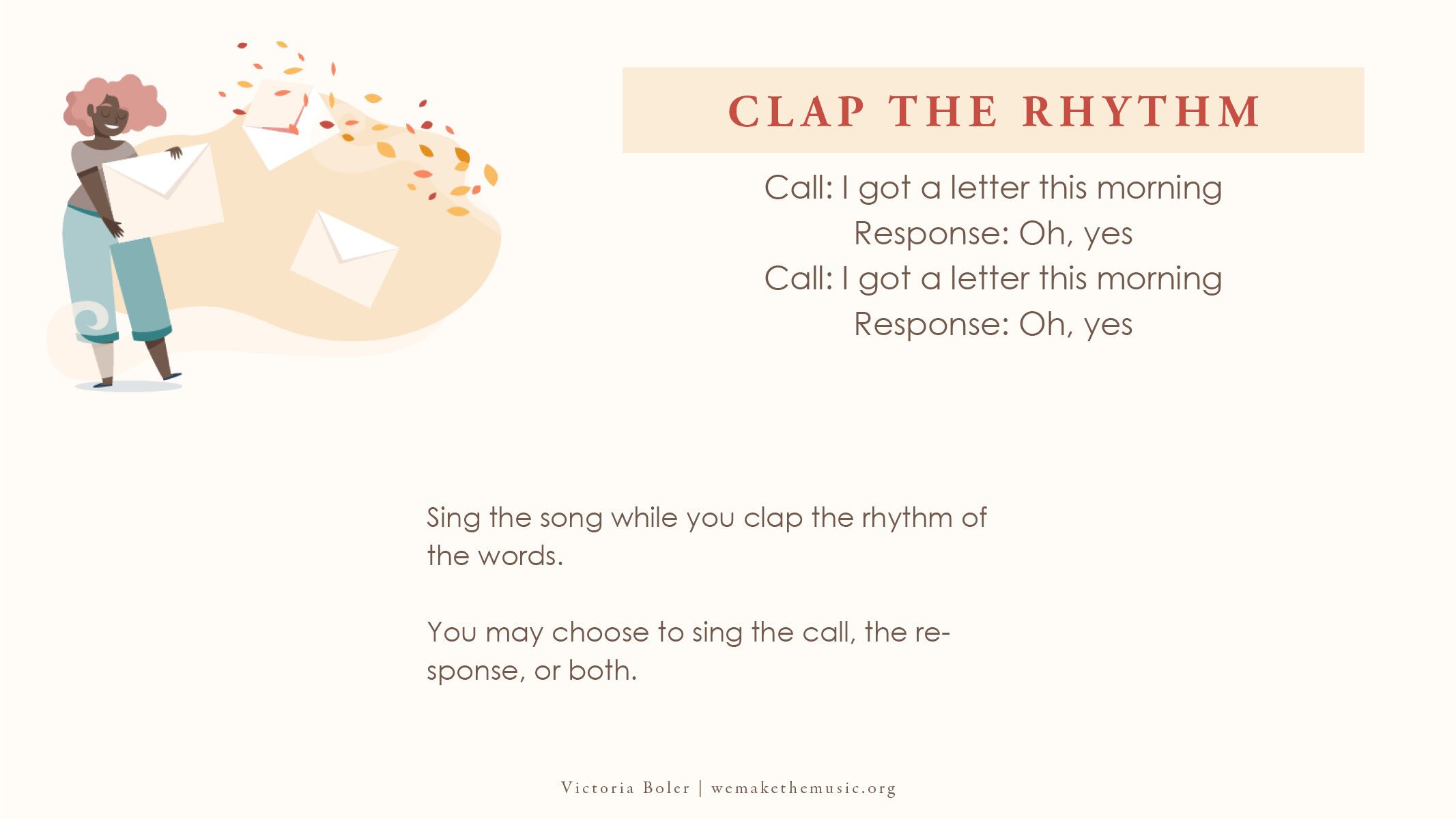

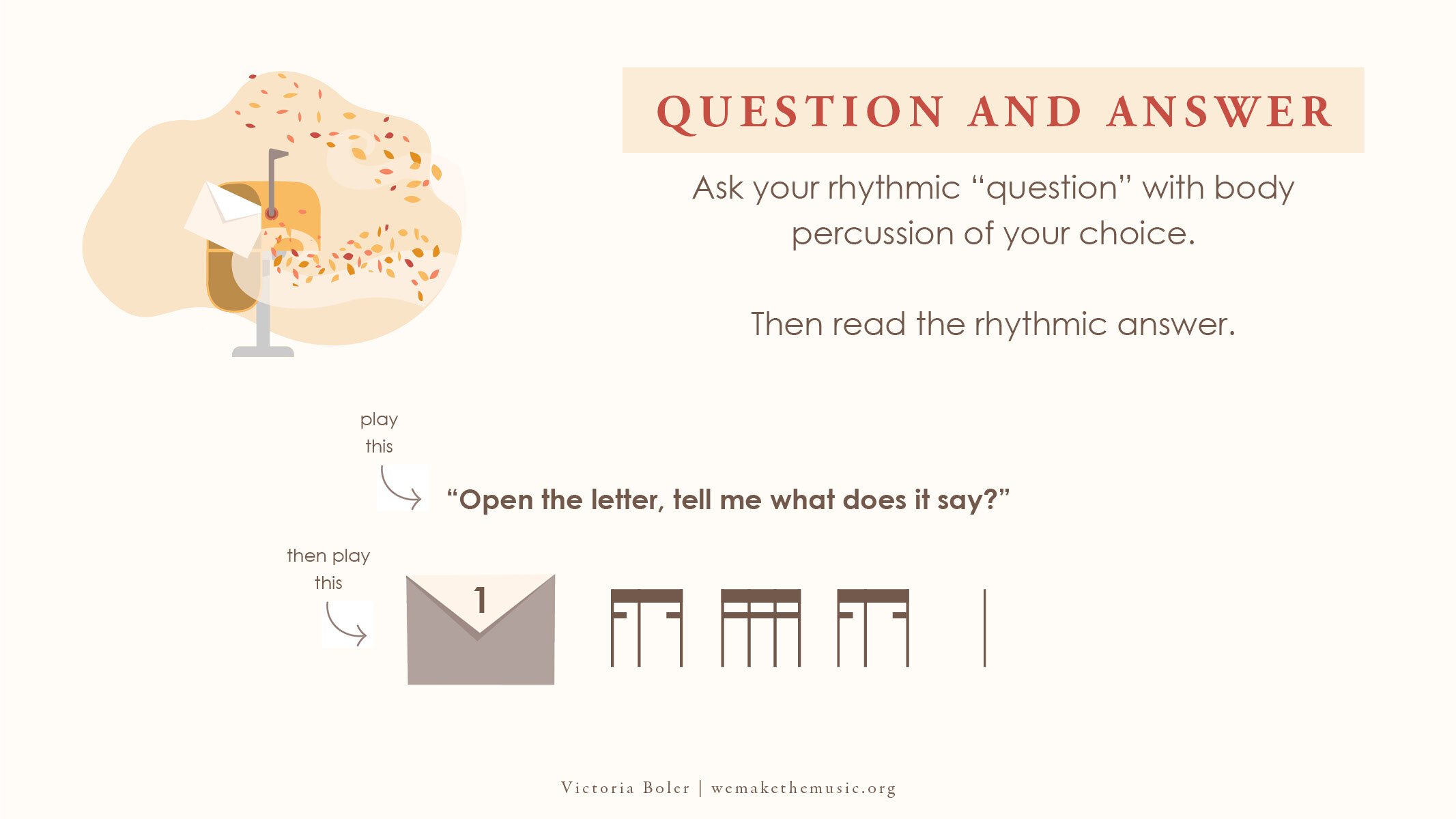
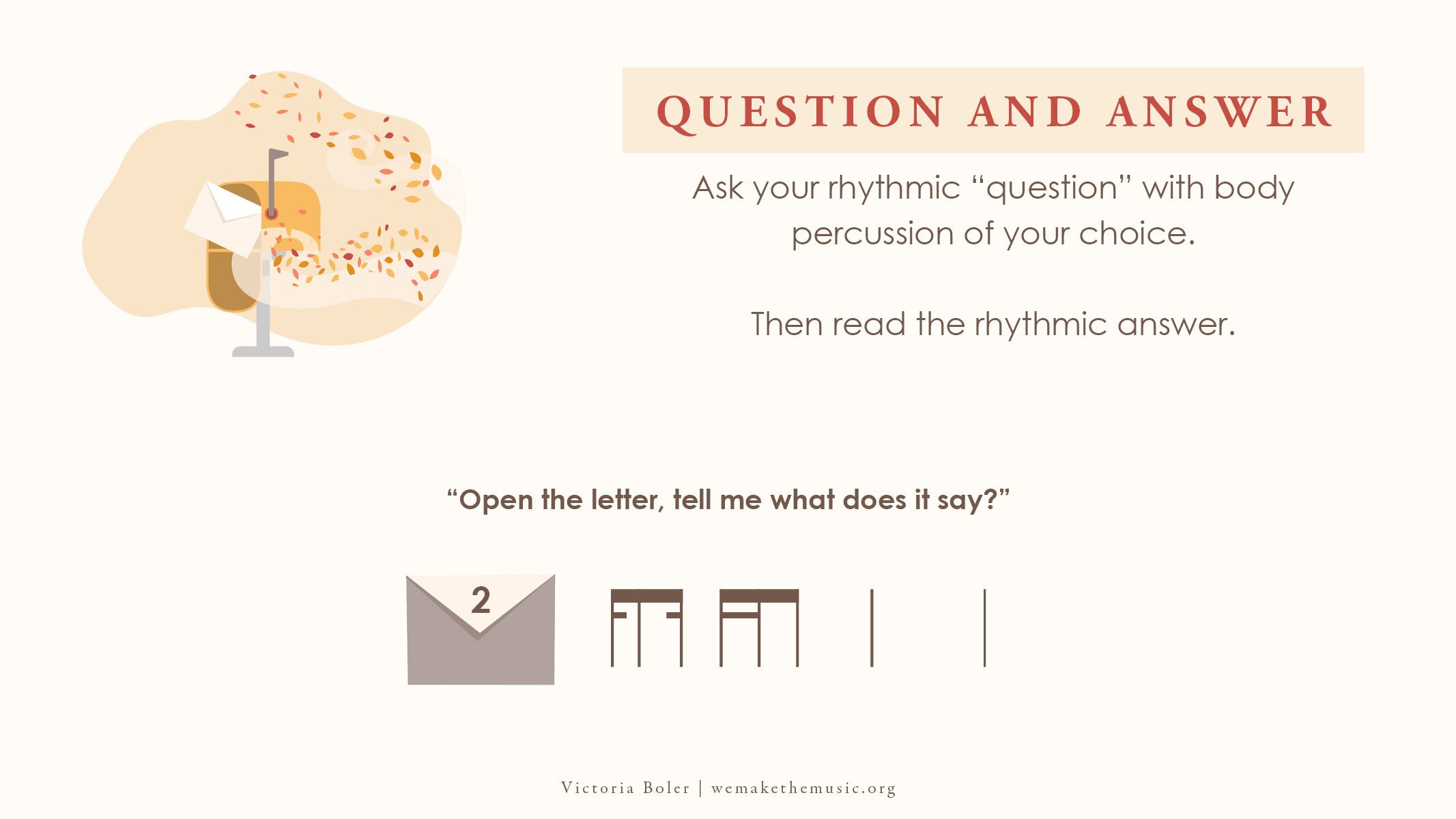
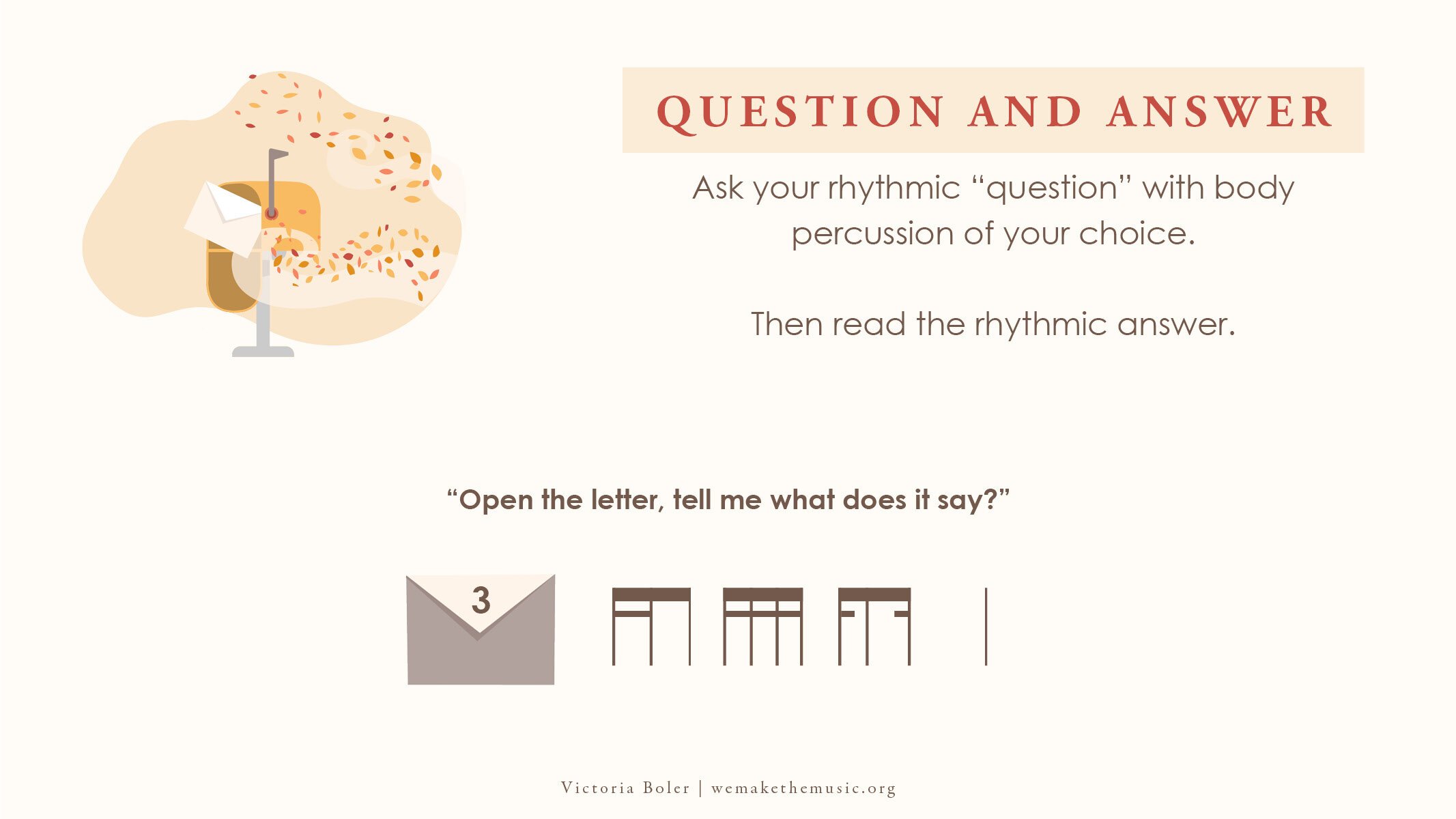

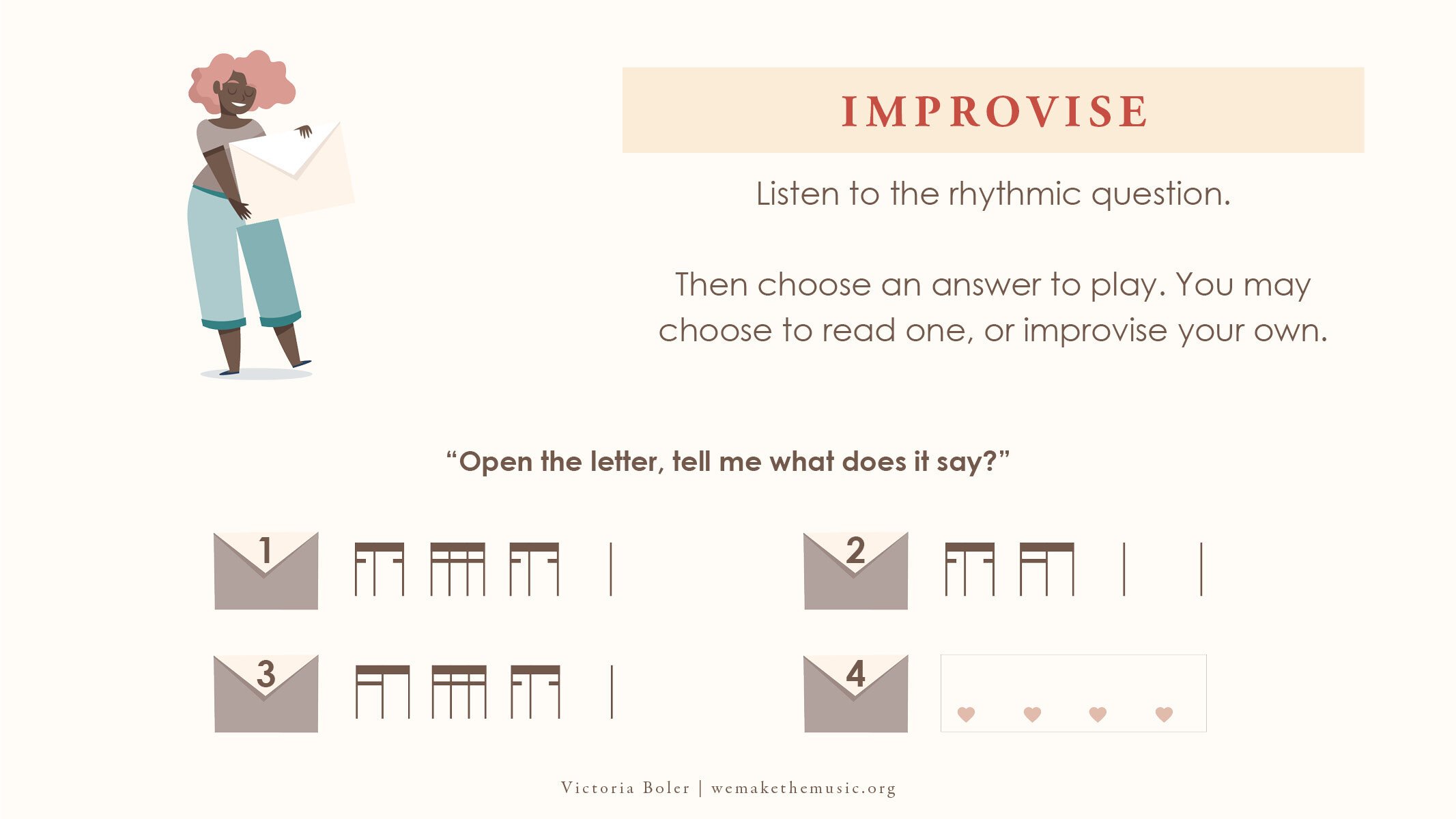
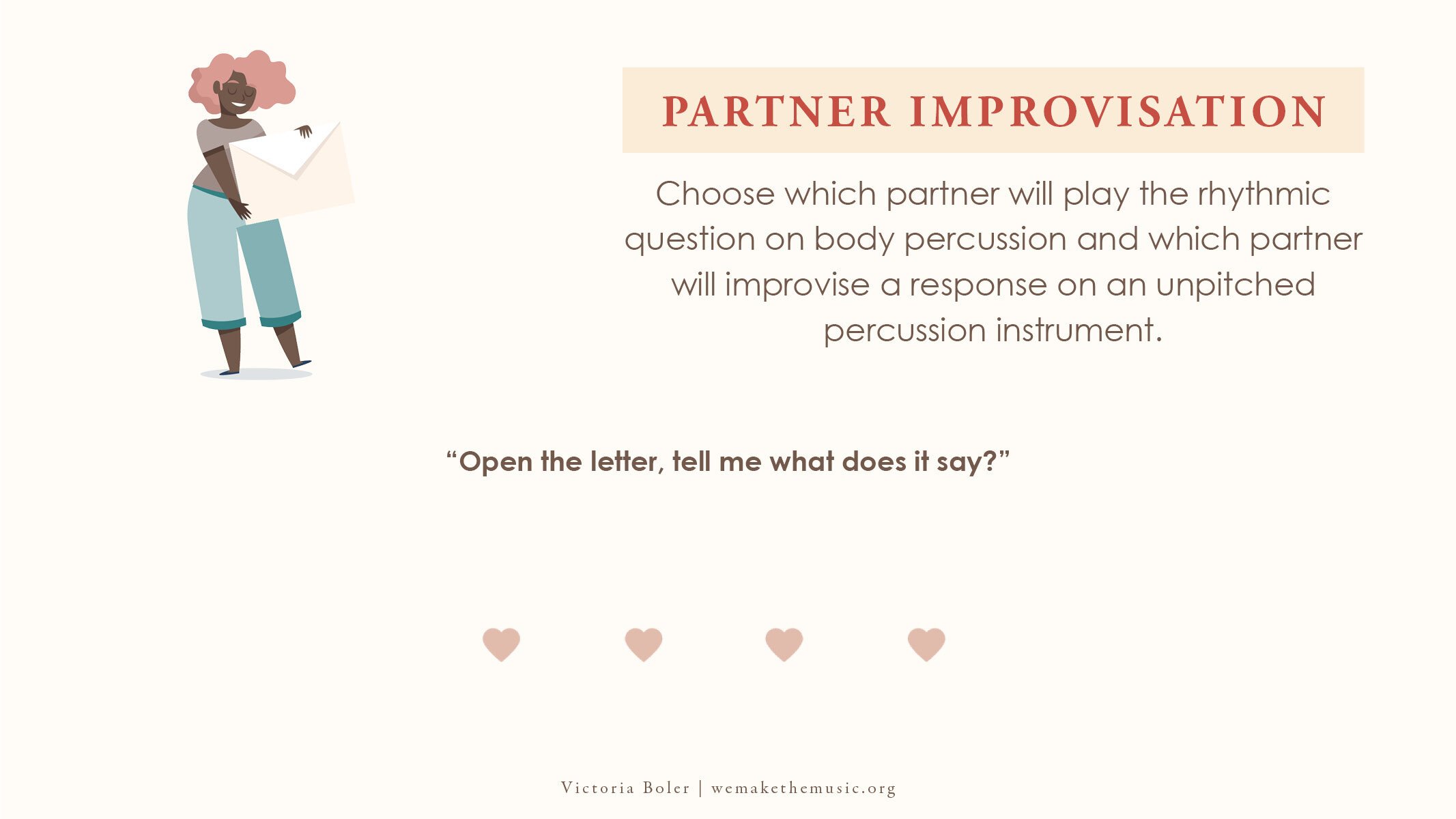
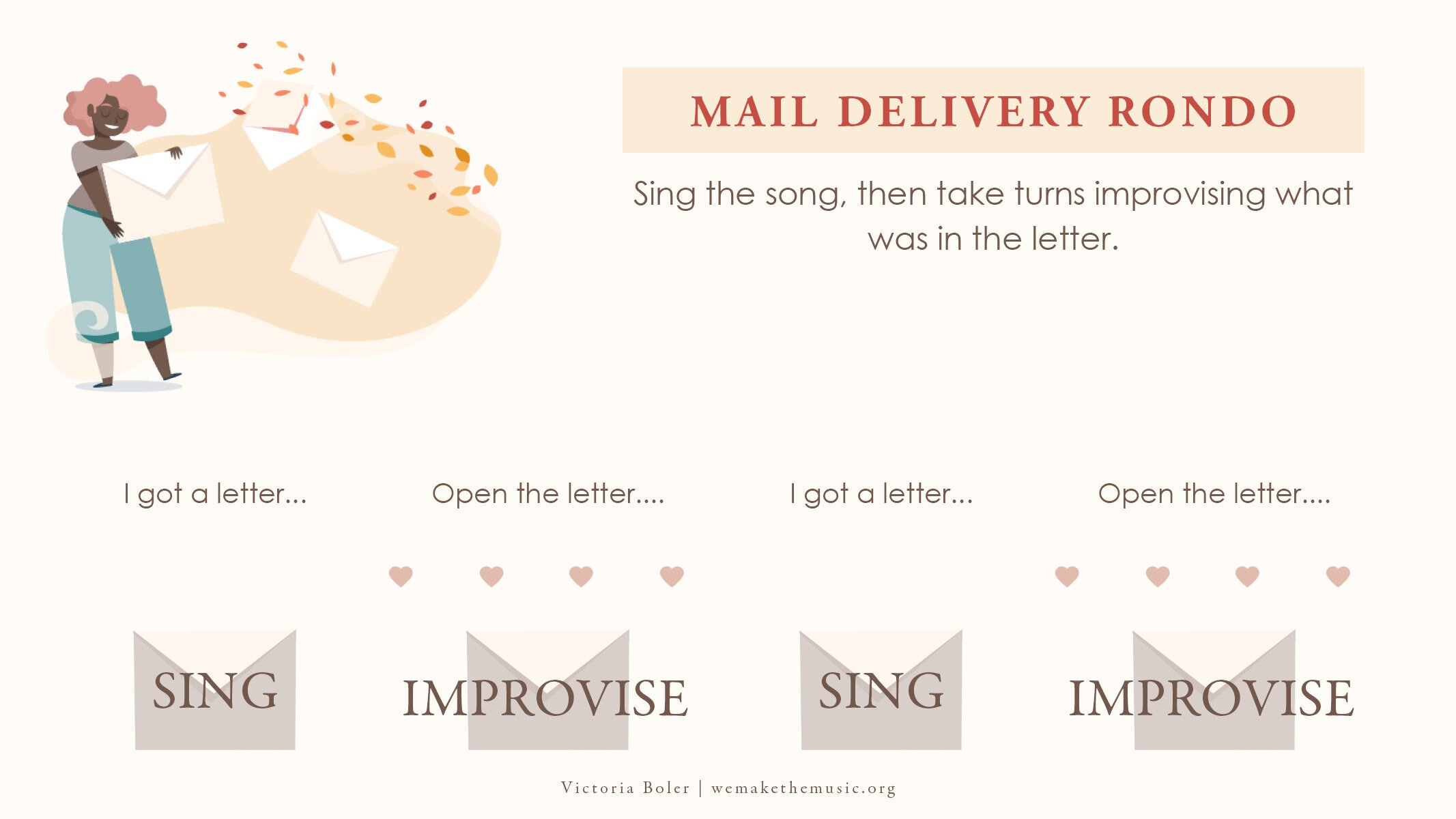
These Google Slides can be used in your classroom right away, but you can also edit them if you want to add some steps.
Extension:
I Got a Letter This Morning is a simple song simply in terms of its form! You can add more rhythmic interest by choosing a student improvisation to be an ostinato. Students can listen to the whole class improvise, then come up with two patterns they believe would sound good together. Listen for rhythms that “fill in” each others gaps. That will ensure that the rhythms are complementary and keep up the momentum of the song.
I love these activities because of their balance of freedom and limits. Students are set up to be musical and successful. They’re also set up to be creative, and to let their unique ideas shine through.
My sincere hope is that these structured activities show students how improvisation is a natural outcome of their musical knowledge. In the sharing and group work of the activities, I hope students see and hear the value in the improvised ideas around them. There is a unique combination in improvisation of making musical decisions, and valuing the decisions of others. What a great job we have!
I’d love to hear some of your favorite improvisation activities as well! Comment below, shoot me an email (victoria@wemakethemusic.org), or find me on instagram (@victoriaboler).










